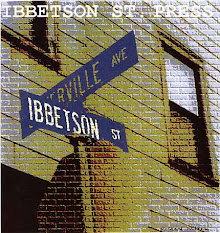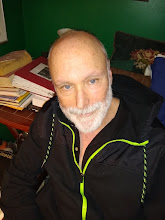
EAT NOT THY MIND by CHARLES PLYMELL (Glass Eye Books/Ecstatic Peace Library
Review by MANSON SOLOMON
Just as it takes a certain sensibility to, for example, dig New Orleans jazz a hundred years later, so it takes a certain frame of mind to relate to poetry harkening heavily back to a bygone era. Does that mean it takes a particular, even peculiar, mindset to respond wholeheartedly to Keats or Wordsworth or Shelley? Perhaps. But perhaps not. After all, are they not assigned to every schoolchild as examples to be appreciated, esteemed and emulated? Still and all, not every contemporary poet or consumer of poetry is at ease with strict rhyme and meter: to many it is a confining and distorting formal straitjacket which hinders and diminishes. We have evolved, they say, the past provides stepping stones not prescriptions.
So one can argue that it is inappropriate to criticize the styles of bygone times – it is what people did then: they made the most of the clay of the day. After all, Bach was not rendered passé by Beethoven and Beethoven is not the worse for having antedated Schoenberg or Stravinsky or Copeland. Chaucer and Raymond Carver were different writers for different times.
So what are we to do about writers who continue to write today in what is by now a bygone style? If it was valid then, spoke to people then, why not continue to produce in that vein? If it once was hot, why not? What’s wrong with composing a new St Louis Blues? Nothing, I suppose, if people today want to hear it, or read it. (And, of course, if it is good.)
We may not write like Keats any more – (hopefully) no one would think to try to produce another La Belle Dame Sans Merci -- but his truth and beauty are still relevant. So what about beat poetry? Are there still folks out there who can groove on the kaleidoscopic imagery of a bygone era? Well, why not? Allen Ginsberg, for example, is part of the accepted canon. His stuff happened in its context and we can appreciate it as an earnest expression of that context.
So here we have Charles Plymell – loose hanging far out tripper buddy of Kerouac, Ginsberg, Cassady et al -- writing beat poetry in 2009. As if to confirm his point of view, the frontispiece (as it used to be called) of his book comes fully equipped with a peace symbol and a psychedelic eyeball. Any child of the 60’s can understand where he is coming from, but is that enough?
And so, the First Question: who out there today will appreciate Charles Plymell’s new volume of beat poetry? What contemporary reader will trip along with lines such as these:
In the paradise of what was once the basin of angels
Sappho found without her cell phone popping a pill
under the olive tree and palm leaves swaying in L.A.
- or to the opening lines of the first poem in the book:
Stone locked savant harmony turn to wounded dust
near us the Monument Rocks in Grove County Kansas
where we heard the voice leveling the wind howling
from ancient shrieking calendars of fiery tent rituals
form violent hoof beats into the plains of autistically
unplugged grumpy Osage where the dominant Sioux
many Navaho came north before Black Kettle’s band
perished in tragic psychic fire of final transformation
cyanic voices gray faces beneath melancholy brown.
Is this poetry which can speak to universal human experience or solipsistic self-absorption? Will today’s readers dig it, or will they dismiss it as anachronistic drug-induced word salad, freely-associated disassociated half-images generated by an unfocused, overly distracted, mind? Is it creative improvisation or a soloist gone off on a random riff playing his own private non-harmonies? Far out is fine, but who’s driving?
Not all the pieces are free association enjambed poetry, however; some of them are essentially prose:
Stardust trapped at the bang became dehydrated, gave off methane gases in the deep
waters gradually through microbial flesh selves, reaching oxygen. Under high
pressure, methane insinuates itself into water around ancient microbes such as
archaea that do not have a nucleus and lack bacteria.
- or –
When anchored, yelled the captain to keep the ship from dragging or waggling at the
same angle from the sun the flower flicker after the waggle dance stops. Hmm said
old Nils about the natives. Their God seems good and true, so I guess we’ll have to kill them.
-- and so on.
And so, the Second Question: Is the poem-like beat stuff really poetry or an acid flashback – or both? Are the prosey pieces actually prose poems or just prosaic? In other words, even if you can dig it, does it really groove, is it any good?
Beats me.








































